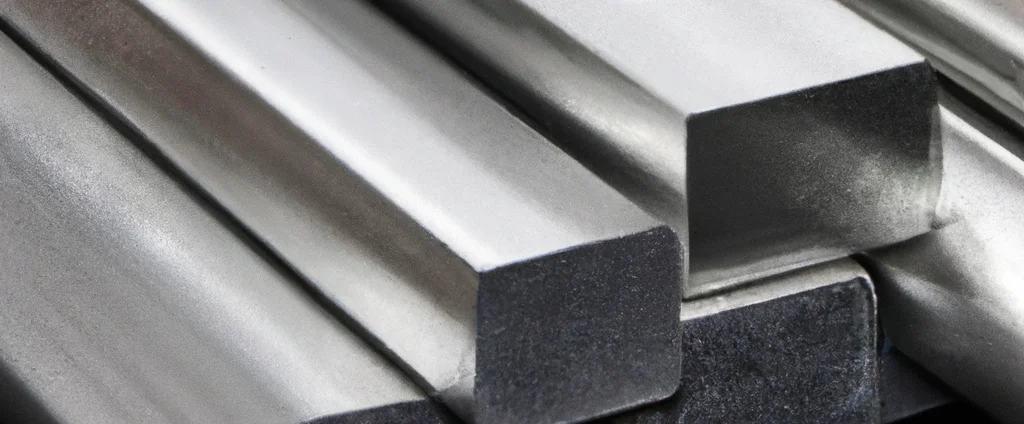Aluminum Alloy 6013 (UNS A96013)

Aluminum 6013 is a wrought aluminum alloy that is primarily composed of aluminum, magnesium, and silicon. It is known for its combination of high strength, good formability, excellent compressive properties, and resistance to corrosion.
| Chemical Composition | ||
|---|---|---|
| Element | Min | Max |
| Aluminum | 94.8% | 97.8% |
| Chromium | —— | 0.1% |
| Copper | 0.6% | 1.1% |
| Iron | —— | 0.5% |
| Magnesium | 0.8% | 1.2% |
| Manganese | 0.2% | 0.8% |
| Silicon | 0.6% | 1.0% |
| Titanium | —— | 0.1% |
| Zinc | —— | 0.25% |
| Residuals | —— | 0.15% |
The following table provides a list of aluminum 6013 properties in both SI and US customary/Imperial units.
Click on the button to switch between Metric and Imperial units.
| Physical Properties | Metric |
|---|---|
| Density | 2710 kg/m3 |
| Mechanical Properties | Metric |
| Tensile Strength | ≥ 380 MPa |
| Yield Strength | ≥ 360 MPa |
| Shear Strength | ≥ 190 MPa |
| Young’s Modulus (E) | 69 GPa |
| Shear Modulus (G) | 26 GPa |
| Elongation at Break | ≥ 5% |
| Poisson’s Ratio (ν) | 0.33 |
| Brinell Hardness | 130 HB |
| Thermal Properties | Metric |
| Melting Point | 580 °C |
| Thermal Conductivity | 164 W/m·K |
| Specific Heat Capacity (Cp) | 900 J/kg·K |
| Coefficient of Thermal Expansion (αL) | 2.34×10-5 1/°C |
| Electrical Properties | Metric |
| Electrical Conductivity | 2.2×107 S/m |
| Electrical Resistivity | 4.0×10-8 Ω·m |
The values in this table are approximate and can vary depending on various factors such as the specific manufacturing process and heat treatment applied to the alloy.
Advantages & Disadvantages of Aluminum 6013
| Advantages | Disadvantages |
|---|---|
| Strength | Availability |
| Formability | High cost |
| Weldability | Lower electrical conductivity |
| Corrosion resistance |
Applications of Aluminum 6013
Aluminum 6013 has become the material of choice for engineers requiring an optimal balance of mechanical properties and environmental resistance. Key industry applications include:
- Automotive industry: Utilized in the automotive sector for the production of structural components, such as body panels, frames, and chassis parts. Its strength and lightweight properties contribute to improved fuel efficiency and overall vehicle performance.
- Aerospace industry: Often employed for manufacturing aircraft structures, including fuselage panels, wing components, and landing gear parts. The alloy’s strength-to-weight ratio and corrosion resistance make it suitable for aerospace applications.
- Marine industry: Excellent corrosion resistance makes it suitable for marine applications, such as boat building and marine structures. Used for constructing hulls, decks, and other components that are exposed to saltwater and harsh marine environments.
- General fabrication: Finds application in general-purpose fabrication where strength and formability are crucial. Used in sheet metal fabrication, extruded profiles for various industries, and welded structures.
- Sporting goods: Employed in the manufacturing of sporting goods like bicycles, golf club heads, and baseball bats. Its combination of strength, lightweight, and formability is advantageous in these applications.
- Electrical enclosures: Used in electrical enclosures due to its corrosion resistance and ease of fabrication. Often employed in electrical cabinets, control panels, and junction boxes.
- Industrial equipment: Utilized in the construction of industrial equipment, including conveyor systems, machinery frames, and support structures. Its strength and resistance to corrosion and wear make it suitable for heavy-duty applications.
